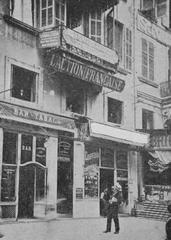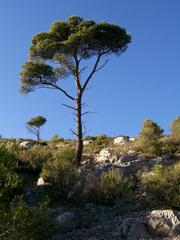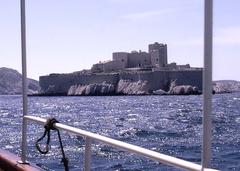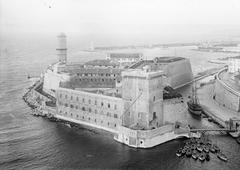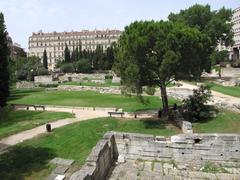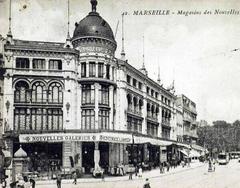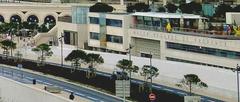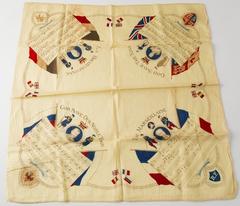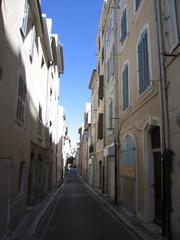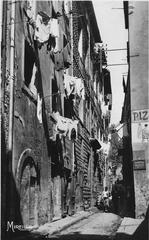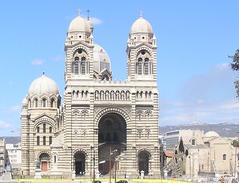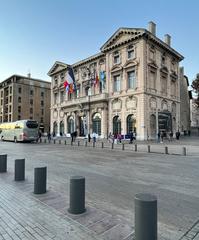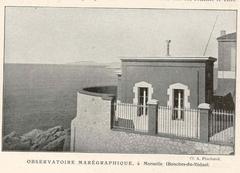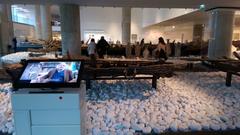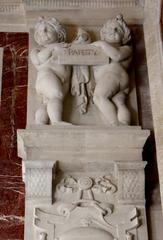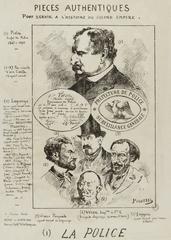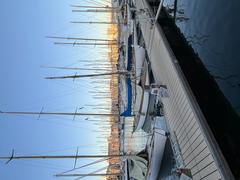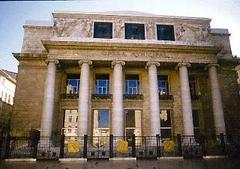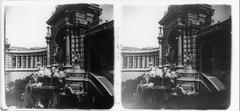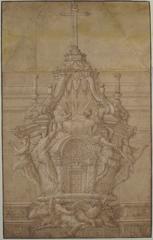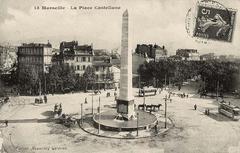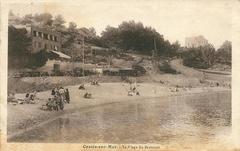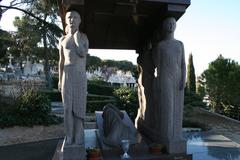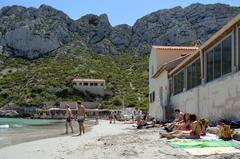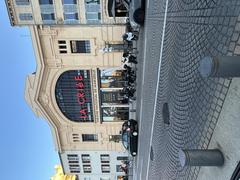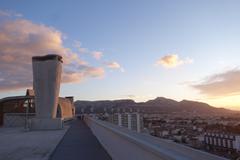Fontaine Cantini Marseille: Visiting Hours, Tickets, and Historical Site Guide
Date: 03/07/2025
Introduction: The Significance of Fontaine Cantini in Marseille
Located at the heart of Place Castellane, the Fontaine Cantini is a prominent symbol of Marseille’s rich cultural, artistic, and civic legacy. Crafted from luminous Carrara marble by acclaimed sculptor André-Joseph Allar and gifted by the benevolent marble merchant Jules Cantini in 1906, the fountain unites classical allegory with regional symbolism. Its sculpted figures represent the Mediterranean Sea and rivers such as the Rhône, Durance, and Verdon, encapsulating Marseille’s maritime spirit and the vitality of Provence’s waterways.
Beyond its role as an architectural masterpiece, Fontaine Cantini is a vibrant centerpiece of urban life—hosting public gatherings and cultural events—and a testament to both the city’s historical evolution and its ongoing commitment to heritage preservation. Following a comprehensive restoration completed in 2025, the fountain now features renewed water displays and dynamic lighting, further enhancing its appeal as a living monument.
This detailed guide offers essential visitor information on hours, tickets, accessibility, guided tours, and nearby attractions, as well as insights into the fountain’s artistic features, restoration, and enduring role in Marseille’s civic identity. For planning and updates, refer to the Marseille Tourism website and Waymarking.com.
Contents
- Discover Fontaine Cantini: Historical Overview
- Origins, Commissioning, and Artistic Features
- Urban Significance and Historical Context
- Visitor Information
- Visiting Hours and Tickets
- Accessibility and Transportation
- Guided Tours and Travel Tips
- Restoration, Preservation, and Modern Enhancements
- Jules Cantini’s Philanthropic Legacy
- Contemporary Civic Role and Cultural Events
- Nearby Attractions and Photographic Opportunities
- Frequently Asked Questions (FAQ)
- Conclusion and Visitor Recommendations
- Sources
Discover Fontaine Cantini: A Historical and Artistic Overview
Origins and Commissioning
The fountain’s creation is rooted in the philanthropy of Jules Cantini (1826–1916), a successful marble merchant and art patron. His 1906 donation of the fountain to Marseille reflected a deep commitment to civic enrichment. Cantini’s generosity extended beyond the fountain—he also donated properties, including the hôtel particulier that became the Musée Cantini, further shaping the city’s cultural landscape (provence-alpes-cotedazur.com).
Architectural and Artistic Features
Designed by André-Joseph Allar, the fountain is a striking example of early 20th-century monumental sculpture. Its central fluted column is topped by an allegorical figure of Marseille, surrounded by four large basins with personifications of Provence’s principal rivers: the Rhône, Durance, Gardon, and Arc. The interplay of classical forms with local motifs celebrates both the city’s maritime identity and natural bounty.
The use of Carrara marble not only elevates the fountain’s aesthetic but also symbolizes Cantini’s professional legacy. Reliefs around the base depict the journey of the Rhône, linking Marseille’s urban identity to the broader Provençal landscape.
Urban Significance and Historical Context
Fontaine Cantini’s inauguration coincided with the transformation of Place Castellane into a key transportation and civic hub. As a focal point for social interaction and public gatherings, the fountain has witnessed over a century of Marseille’s history, adapting through wars, modernization, and urban renewal. Its resilience underscores the city’s dedication to preserving cultural heritage.
Visitor Information
Visiting Hours and Tickets
- Hours: The Fontaine Cantini is an open-air public monument, accessible year-round, 24/7. The most enchanting views are during daylight and early evening when the marble and water features are illuminated.
- Tickets: No entrance fee or ticket is required. The site is freely accessible at all times.
Accessibility and Transportation
- Accessibility: Recent renovations ensure the site is fully accessible, with smooth pathways, ramps, and easy approaches for visitors with reduced mobility.
- Getting There: The Place Castellane metro station (Lines 1 and 2) is adjacent to the fountain. Multiple bus lines and nearby parking make it convenient to reach, although public transport is recommended due to the central location.
Guided Tours and Travel Tips
- Guided Tours: Several local tour operators and the tourism office include Fontaine Cantini in their walking tours, offering in-depth historical and artistic context.
- Travel Tips: Early morning or late afternoon offers the best natural light for photography; evening visits showcase the dynamic lighting. For a deeper experience, pair your visit with the nearby Musée Cantini or local markets.
Restoration, Preservation, and Modern Enhancements
After more than a decade of inactivity due to structural issues, Fontaine Cantini underwent a major restoration as part of the Place Castellane redevelopment in 2025. Key elements included:
- Hydraulic Repairs: Addressing basin fissures and installing an eco-friendly, closed-circuit water system.
- Lighting Upgrades: Introducing permanent white illumination and colored lights for special events.
- Structural Restoration: Cleaning, repairing marble and ironwork, and enhancing accessibility.
The restoration, managed by the City of Marseille and Métropole Aix-Marseille-Provence, was supported by the fountain’s designation as a historic monument in 2024, ensuring ongoing protection and funding (City of Marseille).
Jules Cantini’s Philanthropic Legacy
Cantini’s impact extended beyond the fountain. His donations of properties and support for the arts led to the establishment of the Musée Cantini, a major collection of early 20th-century modern art. His vision for democratizing access to culture and enriching public spaces remains visible in Marseille’s cityscape (provence-alpes-cotedazur.com).
Contemporary Civic Role and Cultural Events
Fontaine Cantini remains a vibrant part of Marseille’s social fabric:
- Public Life: Place Castellane is a hub for markets, festivals, concerts, and community events.
- Lighting Displays: Dynamic lighting celebrates occasions like “Octobre Rose” (Breast Cancer Awareness Month) and local festivals (madeinmarseille.net).
- Urban Renewal: The 2025 renovation prioritized pedestrian access, green spaces, and public seating, enhancing the area’s convivial atmosphere (marseille-tourisme.com).
Nearby Attractions and Photographic Opportunities
- Musée Cantini: Houses an outstanding collection of modern art in a building donated by Jules Cantini (Musée Cantini).
- Parc Longchamp: Features gardens, museums, and another grand fountain.
- Cours Julien: A lively neighborhood known for street art and cafés.
- Daily Market (Avenue du Prado): Offers local produce and crafts.
Photography tips: The fountain’s intricate carvings are best captured in early morning or late afternoon light, while dynamic evening lighting provides unique compositions.
Frequently Asked Questions (FAQ)
Q: What are the visiting hours for Fontaine Cantini?
A: The fountain and Place Castellane are accessible 24/7; water and lighting features operate from dusk until midnight.
Q: Is there an entrance fee?
A: No, visiting is free.
Q: Is the site accessible for people with reduced mobility?
A: Yes, recent renovations ensure full accessibility.
Q: Are guided tours available?
A: Yes, several local tour companies and the tourism office offer guided tours that include the fountain.
Q: When will the full restoration be completed?
A: Final restoration of some decorative elements is scheduled for mid-2025.
Conclusion and Visitor Recommendations
Fontaine Cantini is more than a historic monument; it is a living emblem of Marseille’s civic pride, artistic excellence, and community spirit. Its central location and free, year-round access make it a must-see for every visitor. The recent restoration has revitalized its role as a cultural and social anchor, offering an engaging experience for history enthusiasts, art lovers, and travelers alike.
Enhance your visit by exploring nearby attractions, joining a guided tour, or attending one of the many events at Place Castellane. For up-to-date information, curated guides, and cultural tips, download the Audiala app and follow official Marseille tourism channels.
Sources and Further Reading
- Provence-Alpes-Côte d’Azur Tourisme: Musée Cantini
- Waymarking.com: La Fontaine Cantini, Marseille, France
- Marseille Tourisme: Place Castellane et sa fontaine
- City of Marseille: Place Castellane - Fontaine Cantini
- Official Marseille Tourism Website
